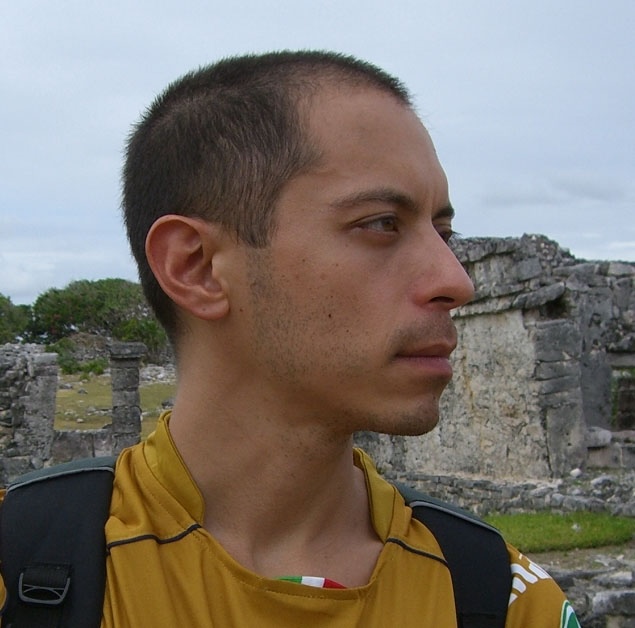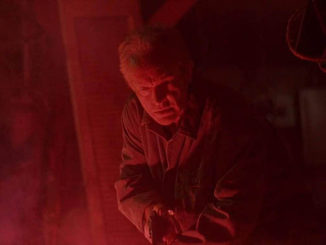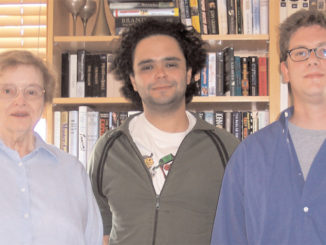
By Su Fang Tham
Director Doug Liman’s “Road House” remake, starring Jake Gyllenhaal, is pure entertainment—a deliriously rambunctious crowd-pleaser. Charmingly infused with deadpan humor, this film is a nostalgic throwback to the joyous escapism prominent in movies from the ‘90s and early 2000s.
“Doug wanted to make what he called a ‘grounded popcorn action movie,'” said picture editor Doc Crotzer, ACE, also known for his work on “Glee” and “Sons of Anarchy.” The movie opened earlier this year and is currently available on major streaming services.
The remake of the 1989 Patrick Swayze cult classic updates the story for today’s audiences. Gyllenhaal’s character, Dalton, a UFC-fighter-turned-bouncer, exudes politeness, sincerity, and calm, which mask his lethal intensity.
Attempting to leave a violent past behind, Dalton is drawn back into action by bar owner Frankie (Jessica Williams), who needs help protecting her seaside establishment—the titular Road House. Situated in the picturesque, fictitious Glass Keys, the bar and surrounding community are plagued by the smarmy crime boss Ben Brandt (Billy Magnussen) and his henchmen, including the maniacal skull-basher-for-hire Knox (real-life UFC champion Conor McGregor).

To capture Liman’s cinematic kineticism, stunt coordinator Garrett Warren and fight coordinator Steve Brown developed a new “multi-pass technique,” allowing cameras to penetrate the heart of the action. “Doug wanted a whole new way of capturing fights, so we have fewer noticeable cuts. The cameras move in ways we’re not used to seeing in fight scenes, creating invisible cuts that make the scene feel like it’s composed of much longer shots,” Crotzer said.
The “A-B-C-D pass” technique involves four blended shots. Initially, an actor throws a punch in the conventional “Hollywood pass,” with the recipient “selling” the impact. In the next step, the struck actor is replaced by a pad, allowing the puncher to hit the pad, visibly impacting the body. The third pass involves the struck actor being hit with the pad to visualize the body’s reaction. The final pass, in slow motion, shows both actors engaging at about 25% speed to capture the impact realistically, all in-camera.
Supervising sound editor Paul Hsu, an Emmy winner, appreciates the organic feel this method offers. “Fewer shots cut together allows you to believe it’s real,” he said, praising Liman’s approach of longer, immersive shots. “There’s a real groundedness, even though it’s hyper-real. We leaned into the grittiness and let it play out as real,” he added.
Unlike typical productions, Hsu’s sound team began their work much earlier in the filmmaking process. “It’s always better when we get on earlier. I did a first temp mix even before the cut was finished,” Hsu said.
Crotzer concurred: “We had this living, breathing movie where sound was updated throughout the 18-19 months of production instead of all at the very end. Sometimes it informed us of what we could and couldn’t get away with.”
Once all four passes were stitched together, they were sent to VFX. “Although there isn’t a visual edit in the traditional sense, you’re still making a ton of decisions. With shots from multiple passes, you might have a character’s fist from one pass and the rest of their body from another,” Crotzer said of the fierce clashes between Dalton and Knox. “You’re making a million small decisions about timing, constantly looking for the best fist and the best angle.”

“They’re doing a lot of invisible work, like rotoscoping around fists. None of the fight scenes was shot on a motion-control camera. So, anytime we had to manipulate an arm, stomach getting punched, a kick, or a fall, VFX has to go through frame-by-frame and rotoscope around. It was way beyond what we could do in-house with Avid,” Crotzer explained. Once it came back from VFX, the cycle repeats. “We drop it back in the cut and see if it works. Maybe the punch doesn’t feel natural now. Does his arm look too long? Or not long enough? Is there enough motion blur on it? All these things that you normally don’t think about in a standard Hollywood fight because it’s pulled punches.”
The energetic fight scenes are set against a lively musical backdrop at the Road House, curated by music supervisor Randy Poster, featuring live performances by various bands across genres like zydeco, R&B, country, and NOLA funk. “This movie is very music-forward,” Hsu remarked on the diverse and high-quality recordings that added emotional layers to the scenes.
“The bands were amazing and very well-recorded. I had all the sound elements available to create some emotion in the bar, whether it’s the crowds, music, or dialogue, while other scenes are all about the punches. Every scene is a blend of these to push the narrative forward. The early temps were really driven by music, it was like music and punches. For some of the scenes, we ended up going back to let the music carry a lot of the scene, because they were so good.”
The long post process also allowed them ample time to formulate the sonic landscape of the bar itself. “Paul and I spent a lot of time talking about what the bar should sound like, what should the crowd sound like, etc. Since it was sort of a character in the movie, it needed to have an identity,” said Crotzer.
To intensify the bone-crunching brawls with a raw and savage feel, “it has to feel big and impactful, but also realistic. We try everything in Foley, the more radical, random, and unexpected, the better,” said Hsu. “We use the range of tonalities. Some of the punches are sounds of a pen hitting a table really hard, followed by the sound of thunder layered underneath to really play the full range of high-low frequency.” In a subtler example of using sound to accentuate emotion: when Brandt confronts Dalton, he plays a YouTube clip of Dalton’s last fight in the Octagon, when he accidentally killed his opponent. “It’s incredibly stylized—at one point, the background fades away. The moment Brandt says ‘Bam!’ [to call out the fatal strike], you hear somebody breaking a pool cue in the back, which amplifies the impact of that line in that moment.”
The film cleverly balances its hyper-stylized violence with comedy, particularly leveraging Dalton’s deadpan humor. “It was a tightrope walk of tone,” said Crotzer. “Whenever it started to get really violent or dark, we looked for moments to lighten things up to remind the audience that, no matter what, this is supposed to be a fun ride.”
A memorable example is when Dalton, driving the battered thugs to the local hospital, stoically warns them of an upcoming “bump” just as The Beach Boys’ iconic tune ‘Kokomo’ starts playing on the radio. “That slap fight into the ‘Kokomo’ scene is crucial because it sets the tone for the rest of the movie. Getting that sequence dialed in is something I’m most proud of,” Crotzer said.
Despite some initial resistance, Crotzer managed to secure the Beach Boys’ hit “Kokomo” for the scene, enhancing the humor and completing the moment perfectly. “That was the most unexpected song for Dalton to be listening to, so I thought it was perfect. But Doug didn’t think it would work,” Crotzer said.
Fortunately, Crotzer was able to convince Liman to give the song a chance at a preview screening.
“I was like, ‘Please let us leave it in for this preview. If it doesn’t get a laugh, I promise never to bring it up again.’ Fortunately, it played out great.”






